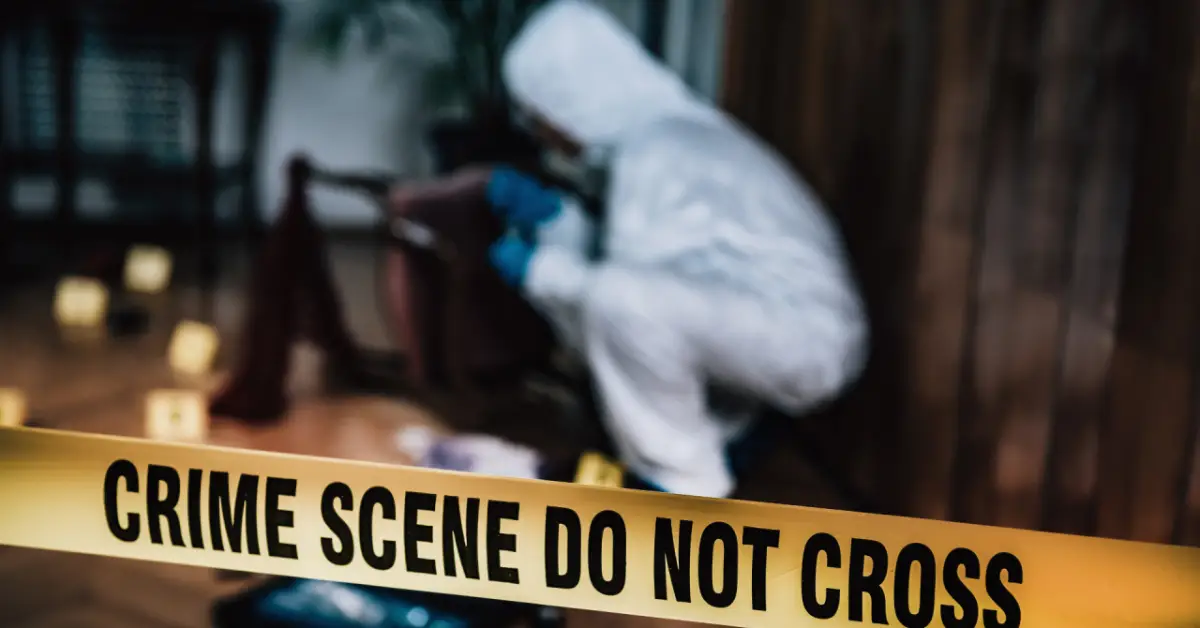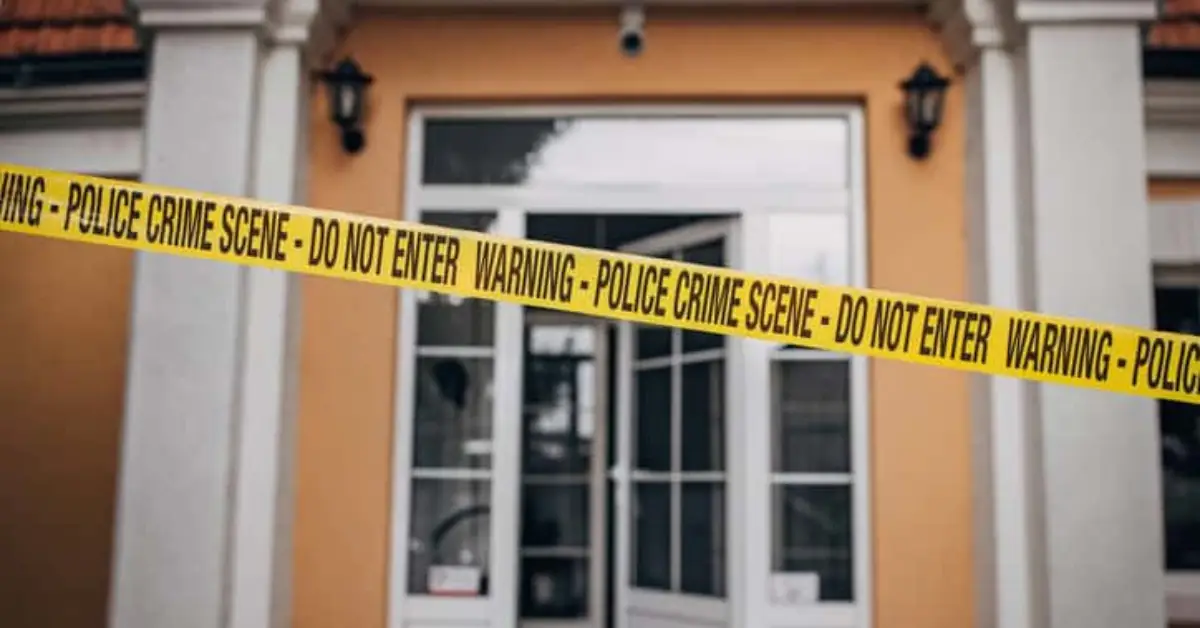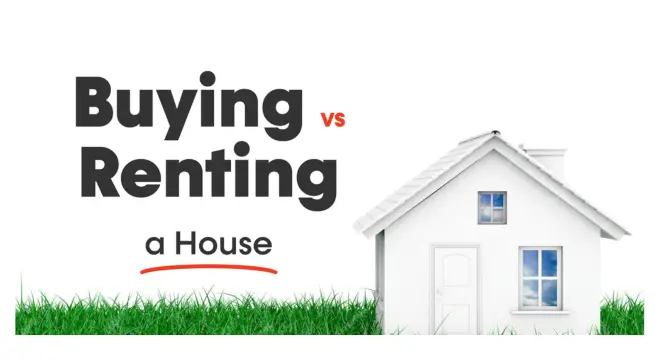Do Violent Crimes Leave a Permanent Mark on Home Prices?
Every homeowner has that quiet fear — what if something terrible once happened inside these walls? Maybe you’ve heard neighbors whisper about a “murder house” that sat unsold for months, or a home that suddenly dropped in value after a violent incident nearby. I’ve seen it happen — and not just in sensational news stories. Real buyers hesitate. Realtors lower prices. The air around such homes changes.
The question isn’t only if crime affects home prices — it’s how deeply and for how long. Does a single tragedy stain a property forever, or can time and renovation heal its reputation? The truth is more complicated than most headlines suggest.
I’ve gone through dozens of studies, real-estate court cases, and agent interviews to unpack this. What I found surprised even me: the price drop isn’t always where you expect it, and the recovery can depend on something as human as storytelling.
In this guide, I’ll walk you through what the data actually says, how “murder houses” differ from neighborhoods with high crime, and why understanding the psychology behind stigma can help you make smarter buying or selling decisions.
Before we dive in — tell me, would you buy a home if you learned something tragic once happened there?
What Searchers Really Mean When They Ask “How Crime Affects Home Prices”
When people type that phrase into Google, they’re actually asking two different questions — and the answers aren’t the same.
Some of you are curious about “murder houses” — the homes where a tragic event like a homicide or suicide took place. Others are thinking about crime in the neighborhood — break-ins, assaults, or shootings that make an area feel unsafe. Both affect property values, but in completely different ways.
I’ve seen buyers walk away from beautiful homes simply because of a single past event, while others will still bid high in a so-called “rough” neighborhood if they believe it’s turning around. It’s not just about fear — it’s about perception, proximity, and permanence.
Here’s the key difference:
- A specific event at an address creates what realtors call psychological stigma. It’s emotional, unpredictable, and fades slowly over time.
- A high neighborhood crime rate affects a buyer’s long-term sense of safety and investment confidence — and that can directly hit the appraisal.
According to research from the Florida State University College of Social Sciences, violent crimes (like assault or homicide) tend to depress property values more noticeably than property crimes such as theft or vandalism. Buyers react more strongly to danger that feels personal — and that reaction translates into lower bids and slower sales.
So when you see “crime affects prices,” it’s not one story — it’s two. One is about what happened inside, and the other is about what happens around it.
What the Data Actually Says (No Hand-Waving)

Numbers tell a more grounded story — and it’s not as dramatic as TV shows make it sound.
- A 1% rise in violent crime in an area can lead to about a 0.2–0.6% drop in home prices, depending on where you live. Property crime, on the other hand, often has little to no measurable effect.
- Homes located within 0.1 miles of a registered sex offender sell for roughly 4% less on average, showing that proximity to risk matters as much as the crime itself.
- Neighborhood income levels change the picture entirely. In higher-income areas, violent incidents trigger sharper price drops because buyers expect safety. In lower-income or transitioning neighborhoods, affordability often outweighs fear, and prices can recover faster.
- Studies on organized crime events (like mafia-related homicides) reveal clear, short-term dips in nearby values — proof that sudden acts of violence can ripple through even stable markets.
When you put it all together, the story isn’t “crime destroys value.” It’s that buyers assign risk differently depending on how close, how severe, and how personal the threat feels. And understanding that — as a homeowner or investor — can help you see where fear ends and real value begins.
So let me ask you — if a home had the right price but a dark past, would you walk away or make the deal?
“Murder Houses” as Stigmatized Properties — Law & Price Penalty
Let’s talk about the uncomfortable truth: a home can be perfectly safe, newly renovated, and still lose value simply because of its story. When a violent event like a homicide occurs inside a house, it doesn’t just change how people see the property — it changes what sellers are legally required to say about it.
Back in 1983, the California court case Reed v. King became the benchmark for this issue. In that case, a woman bought a home only to later discover that a multiple murder had taken place there years before. She claimed the seller knew and didn’t disclose it — and the court sided with her. The judge ruled that the murders materially affected the home’s value, reportedly by around 17%, and that failing to mention such a history could count as misrepresentation.
In states like California, failure to reveal a violent history can even lead to lawsuits — if you want to understand exactly how that works, here’s a detailed breakdown of why you must disclose deaths in your house.
That case, detailed on Justia, set a lasting precedent: when a violent death directly impacts how a reasonable buyer might view the property, disclosure becomes a legal and ethical issue, not just a moral one.
But here’s where it gets tricky — not every state agrees. Some require sellers to disclose a murder, suicide, or haunting. Others only require disclosure if the buyer asks. And a few states classify these incidents as “psychological stigmas,” meaning the seller doesn’t have to say a word.
If you’re buying, selling, or advising someone in real estate, you can’t assume the same rule applies everywhere. What counts as “material” in California might be irrelevant in Texas or Florida. And that inconsistency often surprises both homeowners and agents.
What Competitors Repeat — and What They Miss
When I read through most online articles about crime and property values, I saw the same recycled pattern — a handful of vague numbers and a simple message: “crime makes prices drop.” That’s not wrong, but it’s incomplete.
Here’s what most writers keep repeating:
- General statements like “crime lowers value,” without defining which type of crime or by how much.
- Outdated data that doesn’t reflect today’s gentrifying or rebranding neighborhoods.
- Little to no discussion of the legal side — where disclosure laws and buyer rights actually drive the price conversation.
But they miss the deeper layers that make this topic truly useful for you:
- Time-decay of stigma: how long a “murder house” discount lasts before the market forgets.
- Micro-geography: whether homes on the same street face the same penalty as the actual crime address.
- Liquidity penalty: homes that don’t necessarily sell for less, but sit longer on the market.
- Renovation and storytelling offsets: how a strong rebrand, remodel, or new ownership narrative can rebuild trust.
A Simple Framework to Price Crime Risk or Stigma (For Buyers, Sellers, and Agents)

After comparing research and real-world sales data, I built a quick framework that you can actually use to understand how much crime or stigma should influence price.
Step 1 — Classify the risk:
Is it an event at the address (like a homicide) or an ambient neighborhood issue (like recurring assaults or break-ins). Before making an offer, it’s smart to do your own background check on the property — here’s a guide on how to investigate a house’s hidden history before you buy.
Step 2 — Measure local proximity:
Look at how close the issue is — within 0.1 miles, 0.33 miles, or 1 mile. Values drop most sharply in that first 500-foot range.
Step 3 — Check 3–5 years of crime trends:
If violent crime has dropped steadily while property crime remains stable, that’s a sign of recovery.
Step 4 — Adjust for income and gentrification:
In wealthier areas, stigma lingers longer. In transitional neighborhoods, investor activity can blunt the fear effect faster.
Step 5 — Apply a discount band and liquidity factor:
Instead of guessing, consider this:
- A minor stigma (like an assault next door) might mean a 1–3% value dip.
- A major stigma (like a homicide inside the home) could mean 10–20%, often coupled with longer days on market (DOM).
This framework won’t replace a professional appraisal, but it gives you a grounded way to look at data — and emotions — side by side.
So next time you come across a discounted listing that “feels off,” ask yourself: is it fear driving the price, or facts?
Event-Level Stigma: How Big Is the Discount and For How Long?
Here’s where things get interesting — and often misunderstood. When a homicide or violent event happens at a home, the market reacts immediately, but not forever. The first wave of listings usually carries what I’d call a shock discount — sometimes as steep as 10–20% — because buyers fixate on the emotional discomfort. Interestingly, not every buyer walks away — some are even drawn to these properties for their rarity or discount value. You can read more about why people still buy homes with dark pasts and how psychology plays into their decisions. It’s not about square footage or finishes anymore; it’s about how they feel walking through the front door.
But that fear doesn’t last forever. Over time — typically within 3 to 7 years — resale data shows that the stigma fades. As new ownership changes the story, as neighbors move, and as the event drifts from memory, the discount narrows. Real estate agents who track resales of stigmatized properties often find that the second or third post-incident sale can approach full market value again.
The key is how the property re-enters the market. A rushed listing right after the event usually gets penalized hardest. A measured, well-timed sale after some neighborhood turnover can reclaim much of that loss.
Renovation, Rebranding, and Occupancy Strategies
If you’re a seller or investor dealing with a home that carries emotional baggage, the fix isn’t hiding the truth — it’s changing the narrative. I’ve watched experienced flippers transform stigmatized homes into success stories through three smart moves:
- Renovate with purpose: A full remodel that changes floor plans, wall colors, and layout helps buyers separate the “old” story from the new.
- Refresh visuals: Update listing photos, add natural light, and invest in professional staging. Visual first impressions shape emotional comfort more than disclosures do.
- Create positive history: Rent the property for a year or two, or let long-term tenants occupy it first. Normal, everyday living helps neutralize stigma faster than any marketing line.
These strategies don’t erase what happened, but they remind buyers that homes — like people — can heal over time. A property’s story evolves, and how you present that story can be worth thousands.
Neighborhood Crime Rates: When Prices Still Rise
It might sound counterintuitive, but some neighborhoods with higher reported crime still see rising property values. How? Affordability and yield. Investors often see opportunity where others see risk, especially when prices are low and rental returns are high.
A recent analysis from MoneyWeek found that in parts of the UK, towns with above-average crime rates were still posting faster house price growth than safer areas — largely because buyers were priced out elsewhere. The pattern isn’t universal, but it proves that crime perception doesn’t always equal market collapse.
For investors, the lesson is to weigh data over fear. If employment is steady, infrastructure is improving, and rental demand remains strong, even a “high-crime” postcode can become a profitable bet.
Law & Disclosure — A State-by-State Cheat Sheet (Scannable Table)
This is where things often get legally messy. After hearing about the Reed v. King case, most sellers wonder: “Do I really have to tell the buyer if someone died here?”
The answer depends entirely on where you live. Each U.S. state handles disclosure differently, which is why a simple, scannable table can save you headaches later. It should include:
| State | Disclosure Required for Homicide/Suicide? | Look-back Window | Buyer Inquiry Trigger? | |
|---|---|---|---|---|
| California | Yes (Material event) | 3 years | Yes | |
| Texas | No | — | Only if buyer asks | |
| Florida | Conditional | None set | Yes | |
| New York | Conditional | None set | Yes | |
| Illinois | Yes (if recent) | 1 year | Yes |
So, if you’ve ever wondered whether “what happened inside these walls” needs to be said out loud — now you know where to start looking.
Investor & Seller Playbooks (Two Fast Lanes)

Let’s turn everything we’ve talked about into action. Whether you’re trying to sell a home marked by tragedy or thinking about investing near a high-crime area, there’s a smart way to move forward.
Seller Playbook (If a Violent Event Occurred at the Address)
Selling a home with a difficult past isn’t just about setting the right price — it’s about handling the truth with strategy and sensitivity. Here’s what I recommend:
- Be transparent, not theatrical: If your state requires disclosure, do it early and calmly. Buyers trust honesty far more than late surprises.
- Control the sequence: Rent first if you can. A few years of stable occupancy make a huge difference in how the property feels — and sells.
- Renovate with intention: Change the layout or finishes enough that the home looks and feels “new.” The goal is to make buyers see life, not loss.
- Manage the media narrative: If the event was public, don’t fight the story — reframe it. A simple “beautifully restored” line works better than denial.
- Set pricing bands wisely: Expect a 10–20% discount window initially, but plan to test higher once the property’s reputation resets.
You’re not hiding the past — you’re rebuilding trust through proof of normalcy.
Investor Playbook (If Buying Near Hot Spots)
For investors, crime data can look intimidating — but where others see fear, you can find opportunity.
- Build in a yield buffer: Higher perceived risk should mean stronger cash flow. Don’t settle for thin margins near volatile zones.
- Budget for safety upgrades: Lighting, gates, and cameras aren’t just for peace of mind — they boost rental demand and retention.
- Think in horizons: Plan to hold for 5–7 years to outlast stigma cycles. Panic-selling early often wipes out gains.
- Check insurer stance: Some carriers penalize high-crime ZIP codes; factor that cost in before bidding.
- Watch for recovery signals: Look for new infrastructure projects, local policing improvements, or big employer entries — early signs of rebound.
If you treat crime risk like any other market variable — measurable, improvable, and temporary — you’ll start spotting potential others miss.
Key Takeaways for Buyers, Sellers, and Agents
- Event-level stigma fades with time: The worst discounts happen right after the incident and tend to normalize within 3–7 years.
- Proximity matters more than fear: Properties within 0.1 miles of a violent event feel the biggest hit; beyond that, values stabilize quickly.
- Renovation can reset emotion: A strong visual rebrand or tenancy period helps remove stigma faster than pricing alone.
- Disclosure laws differ: Always check your state’s rules before listing — honesty early saves lawsuits later.
- Buyers should read data, not headlines: Long-term growth often depends on income, infrastructure, and time — not just fear-driven perception.
The real lesson? Crime impacts value only as much as people let fear define it.
Have you ever walked away from a property because of its past — or bought one others wouldn’t touch? Share your thoughts in the comments below.
For more real-world property insights, renovation strategies, and neighborhood data breakdowns, visit Build Like New — where homes get second chances and smart buyers find real value.
Disclaimer: The information in this article is for general educational purposes only and should not be taken as legal, financial, or real estate advice. Laws on property disclosure and valuation vary by state. Always consult a qualified real estate attorney or licensed professional before making buying or selling decisions.


